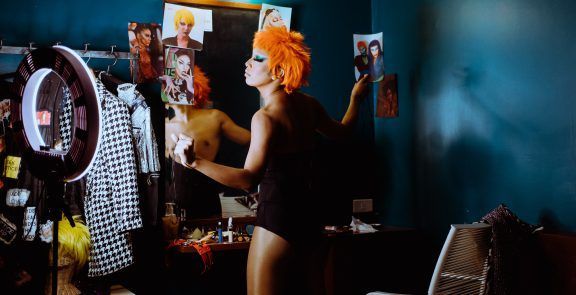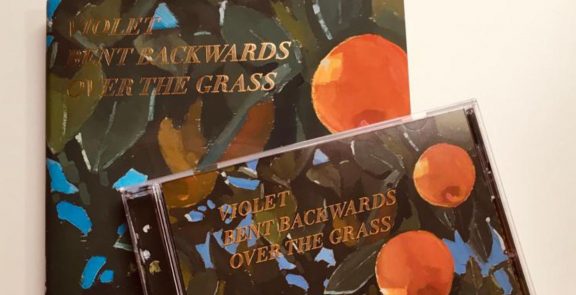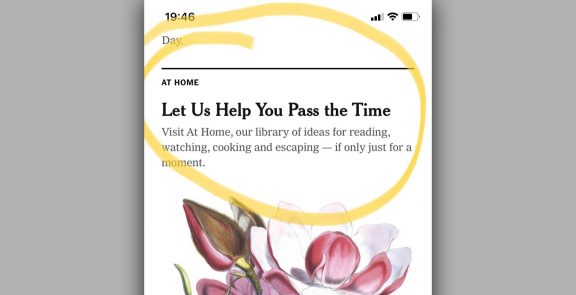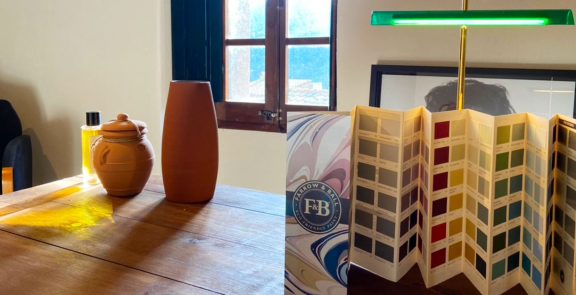
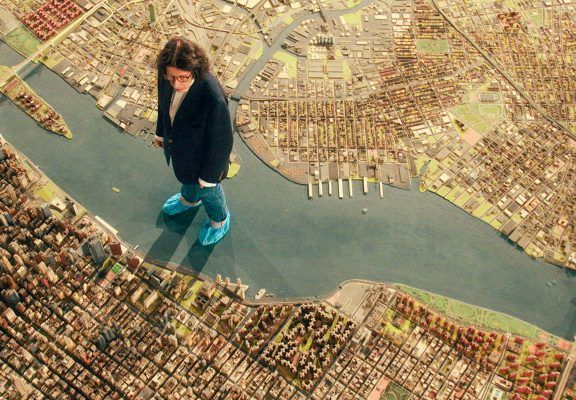
«Pretend It’s a Brand»: Do we know what they expect from us?
IN A NUTSHELL:
How to sell brands and products at a time when the present and future have become more uncertain (and fatal) than ever before? Probably unintentionally, Fran Lebowitz poses questions in “Pretend it’s a City” that call on us to rethink the present and future of brands and companies during and after a crisis.
THE GREAT STRATEGIC TAKEOUT:
Coronavirus has laid bare a difficult reality, as the world as we know it ceases to function: consumer expectations of brands and companies have changed, the crisis is shifting the focus of priorities and trust is more at stake than ever. It is time to construct new paradigms that connect with and respond to the present and future.
Why should I read this?
All crises are a time to detect new opportunities, rethinking and transforming the old models.
What are we talking about?
“Pretend it’s a City”, the new documentary miniseries from Martin Scorsese and Fran Lebowitz on Netflix, inspires strategic questions, regardless of personal opinions about the content, concerning the transformation of the present and future of brands/companies during and after this crisis:
How do cities transform at a time when we cannot travel? “Let’s pretend…” we go back to the beginning and we question every aspect of our brand: what if New York is not a city? What if it is a series or a story? What if it is a person that represents the values/characteristics of the city? It’s time to transform and adapt products and brands according to the limitations. A few months ago, it was unthinkable that a brand-city like New York, so globalised, hyped and mainstream, could be transformed and adapted to the “new reality”; but it is interesting to see how it evolves and is today consumed as entertainment and digital content.
How is the culture of wellness transformed at a time when “achieving it” has become so difficult? Fran Lebowitz says: “What is wellness? It is like extra health. Wellness is a greediness. It’s not enough to not be sick, I have to be well. Wellness is something you have to buy. There is special food: teas, seeds, juices, smoothies… All things people are looking for in wellness, I wouldn’t want them. No, thank you.” What is wellness today? How has it changed? What is the relevance of self-care at a time when collective care becomes more important than ever? What place is given to mental health from now on? The understanding of wellness has been constructed, on the whole, as a purely individual process. Now more than ever, it is necessary to transform the way we look at it and to bring in the idea that individual health is entirely linked to collective health and that of the planet. We must tone down our demands and be supportive.
What is the role of communication from brands at this time: to build on optimism or admit uncertainty? Since the beginning of this humanitarian crisis, we have had a lot of content, communication and entertainment focused on hope, optimism and the positive side. This is a valid survival strategy in an attempt to overcome suffering, pain and uncertainty, but it may collapse in the face of increasingly terrifying events. Fran L has a discourse in which anger, criticism or pessimism play an important role in connecting with the audience. And this is important to bear in mind, as nowadays it is seen as a means of defence by many people to avoid being caught by surprise and not be so affected by the bad news of the day. At the moment, being pessimistic, negative or showing the “not so bright side of life” helps us create lower expectations and thus feel less anxious.
How is the role of brands in reproducing stereotypes and standards being transformed? This miniseries shows us that it is possible to change a brand like New York —through a raw, critical and realistic discourse— from a romanticised narrative to a story full of reality and honesty that shows the good and the bad, that deconstructs taboos and that continues to make it attractive even when showing its “weaknesses”.
Links and what to focus on:
Netflix. Pretend It’s a city
- It uses a critical/questioning tone: a way to show reality in a world where brands seem to focus more on selling an idealised image than a reality.
- It humanises the brand through an iconic character: the emphasis is not so much on the city as on the character embodied by Fran L, her values as a person, her character and her way of “using” New York. (The emphasis is not so much on the brand as on the people who use it)
- It breaks with the stereotype of the aspirational New York speaker (far from Sex and the City or Gossip Girl) and brings a writer —a woman, an adult and a lesbian— who worked as a house cleaner and taxi driver into the limelight.
- It builds upon the character of the anti-hero: she is the witty and entertaining hater friend who everyone wished they had.
- It proposes entertainment as an alternative to travel when it is impossible to do so in the pandemic.
- It shows the B-side: Sex and the City, and other shows, portrayed the iconic version of the city, while Fran L shows some of the issues in the “real” and everyday life of the city.
- It treats the viewer as an insider. It puts the consumer on the same level and empathises by generating a horizontal link, where no one knows “more”. And it is aimed not only at the audience as “tourists” but as if they were “citizens”.
- It reinvents a brand in the context of a pandemic: the storytelling and the discourse recount an experience of NY that reinvents the city so that it can continue to be known and visited in a different way.
- It avoids the vision of legacy or future and focuses on the present, in an uncertain world in which thinking about the future is thoughtless and it poses new possibilities and facets of reality.
- It does not try to sell, but rather to raise awareness through the content.
WHY YOU SHOULD BE INTERESTED:
Because the role of brands and companies is undergoing a time of transition and transformation, and the ones that can adapt and connect with the public and its new needs will remain relevant.
What needs does it meet?
I am interested in the brands/companies showing a more realistic view that is connected to reality. I am not interested in outdated fantasies.
From a strategic perspective:
It is necessary to rethink the questions and deconstruct paradigms of marketing and communication established so far.
Who might be interested?
All brands, especially the mainstream and legacy brands that want to transform and adapt to the “new” reality. And brands in categories linked to wellness.
Where do I implement it?
Many of these questions can serve to inspire consumer research studies, elements to consider in communication briefs, such as tone, as well as in terms of strategy.
How do I implement it?
- Using a human and realistic communication tone that shows the strengths and weaknesses of the brand in an authentic way.
- Generating empathy through a character/icon that has already built credentials with the public.
- Rethinking the role, mission and purpose of the brand for collective well-being.
- Going beyond messages and supporting, empowering and proposing conversations about the well-being of consumers from an empathetic and undemanding approach.
- Exposing, talking about and breaking taboos about mental health.
How innovative is it?
Reflecting on the current moment, this documentary miniseries poses alternative and innovative proposals that connect with audiences in these times of crisis.
Key concepts:
Wellness, entertainment, brand strategy
I WANT IT FOR MY COMPANY/BRAND. WHAT DO I NEED TO KNOW?
Who is using it already?
- Transformation of cities: Ikea and Space10, its research laboratory —supported by and entirely dedicated to Ikea— whose objective is to design innovative solutions for some of the main social changes that are expected to affect people and our planet in the coming years.
- Transformation of the wellness culture: Madhappy. A clothing brand with the mission of making the world a more optimistic place and “making clothes to improve mental health”. Making the issue “fashionable” has a lot of value, but it can also be tricky to take on such a big responsibility.
- Transformation of the role of communication in a pandemic. Using a strategy based on the collective tension of the year, a well-known Argentinian winery broke with the norm with a product name that is an abbreviation of a traditional Argentinian insult. Thus, 2020 LPQTP was born, a sparkling wine that created quite a stir and with the intention of raising a parting toast to the year “without mincing our words
- Transformation of the reproduction of stereotypes and standards: menstruation product brands, such as Thinx, are rethinking their public, offering alternatives for people with periods and breaking taboos.
Things to keep in mind:
- Establish authentic, real and transparent discourses that can be sustained over time through actions (and not just words).
- Being in constant contact with the public and putting them in the centre will help us receive feedback at this critical time and be able to respond to their interests and help alleviate tensions.
- Collaborate with experts and consumers in the discussion and rethinking of issues such as well-being and mental health.
- Understand, support and guide at this time from a realistic and authentic point of view.
How do I get a clearer idea?
- Transformation of cities: Ikea and Space10
- Transformation of the wellness culture: Madhappy
- Transformation of the role of communication in a pandemic: 2020 LPQTP
- Transformation of the reproduction of stereotypes and standards: Thinx
How do I share it with my network?
“An alternative look at the great challenges that arise at this time of crisis”
